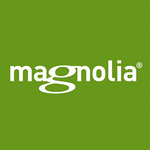Yes, the Headless Content Management System (CMS) may be accessed from various devices and platforms. This is because Headless CMS separates the website's backend and frontend, allowing content to be delivered and presented on any device or platform with an internet connection. It provides a responsive and seamless experience for users regardless of device or operating system, making it an adaptable alternative for website management.
List of 20 Best Headless Content Management System
CloudCannon is a platform designed to support modern tech ecosystems, offering developers a user-friendly editor so they can devote more time to coding. By seamlessly incorporating Git, teams can effortlessly collaborate and optimize their content ma...Read More CloudCannon
Zesty.io is content management system designed for businesses looking to boost their online presence. It offers advanced features such as composable elements, data-driven tools, and AI integration, all through a user-friendly drag-and-drop interface...Read More Zesty.io
GraphCMS - the powerful headless CMS that puts GraphQL at the forefront, making content management and distribution a breeze. Its API-centric design allows you to seamlessly combine data sources and create highly-scalable digital experiences. Increas...Read More GraphCMS
Amplience is a content management system powered by AI, designed to help brands create dynamic shopping experiences. A seamless integration with top platforms such as Salesforce elevates SEO and content discovery for over 400 international brands. St...Read More Amplience
Strapi is a headless CMS that offers unparalleled flexibility and customization options due to its open-source design. Built entirely with JavaScript and TypeScript, developers can seamlessly integrate their preferred tools and frameworks while edito...Read More Strapi
Cloud CMS platform that utilizes AI-powered workflows to simplify content creation. With secure and scalable solutions, organize structured data, engage with customers instantly, and seamlessly integrate with various cloud services. Revolutionize you...Read More Cloud CMS
Squidex, the Headless CMS of choice for developers. With its robust API support, seamless integrations, and advanced content versioning capabilities, Squidex makes content management a breeze. Its powerful workflow systems, easy localization, and fle...Read More Squidex
Directus is an innovative backend solution that empowers developers to effortlessly create custom APIs. With its modular toolkit and real-time data functionalities, project deployment is streamlined, making it the perfect choice for teams seeking eff...Read More Directus
Prismic.io is a versatile headless CMS created to streamline the publishing process for marketers. Its integrated features make development easier for developers, while its Page Builder enables quick and personalized website updates. With Prismic.io,...Read More prismic.io
Magnolia CMS is digital experience platform designed to simplify your digital processes. It seamlessly integrates content, commerce, and customer data to enhance productivity and increase customer engagement. Its intuitive tools allow for easy creati...Read More Magnolia CMS
Contentstack is a headless CMS that streamlines content creation, organization, and distribution for your team. With its intuitive interface and API-first approach, Contentstack empowers seamless workflows for swift publishing across multiple platfor...Read More Contentstack
Contento CMS, the premier choice for headless CMS solutions. Designed to streamline website creation and management, our platform offers top-of-the-line SEO tools, intelligent URL handling, efficient asset management, and advanced image optimization...Read More Contento CMS
Butter CMS, an advanced headless CMS platform that takes developers and marketers to the next level. With its user-friendly marketing dashboard, lightning-fast API, and advanced Git version control, managing content and improving customer interaction...Read More Butter CMS
Sanity is a content platform utilized by top companies such as Nike, Sonos, and National Geographic. It enables organizations to generate content in the form of data and utilize APIs for streamlined content editing and sharing across various systems...Read More Sanity
Webnexs Headless is a ecommerce platform designed to streamline online retail businesses of all sizes. With its robust APIs and easy-to-use interface, merchants can seamlessly integrate and manage their ecommerce operations. Customizable features mak...Read More Webnexs Headless
Muvi Flex solution for flawless video delivery. Transform your website with our powerful tools, seamlessly incorporating high-quality video content to captivate your audience. Say goodbye to complex processes and give your viewers the best video expe...Read More Muvi Flex
Webiny is versatile content management system that operates on a serverless structure and is fully open-source. With a headless CMS, comprehensive page building tools, and a dependable file management system, Webiny empowers organizations to effortle...Read More Webiny
Sitecore Experience Platform solution for revolutionizing your digital marketing strategies. This powerful software merges content management, personalization, and analytics to empower businesses in crafting personalized, top-notch customer experienc...Read More Sitecore Experience Platform
Turtl is a content creation tool that transforms the way teams design and deliver exceptional materials. With a user-friendly drag-and-drop interface, combined with advanced data tracking features, Turtl empowers organizations to connect with their a...Read More Turtl
dotCMS is content management system that operates on Java technology. Its intuitive interface enables effortless creation and delivery of engaging content to your audience. The modern design and speedy performance make it the ideal solution for manag...Read More dotCMS
Learn More About Headless Content Management System
- What Is Headless Content Management System?
- What Are The Recent Trends In Headless Content Management System?
- Benefits Of Using Headless Content Management System
- Important Factors To Consider While Purchasing Headless Content Management System?
- What Are The Key Features To Look For In Headless Content Management System?
- Why Do Businesses Need Headless Content Management System?
- How Much Time Is Required To Implement Headless Content Management System?
- What Is The Level Of Customization Available In Headless Content Management System?
- Which Industries Can Benefit The Most From Headless Content Management System?
- Conclusion
What Is Headless Content Management System?
A Headless Content Management System (CMS) is a software platform that enables content creation, organization, and management via a back-end system, rather than a traditional front-end interface. In layman's words, it's a content management system that isolates the content from the presentation layer, allowing for greater flexibility and scalability when developing websites and applications.
With a headless CMS, content can be saved and managed in a single location and sent to any front-end or digital touchpoint via APIs. This means that developers can create the user interface using any programming language or framework they like, rather than being bound by standard CMS's built-in templates. One of the primary advantages of a headless CMS is the ability to allow omnichannel content distribution.
With the proliferation of digital touchpoints like as websites, mobile applications, IoT devices, and social media platforms, generating and managing content for each can be time-consuming and complicated. However, a headless CMS allows content to be quickly repurposed and delivered across all channels, resulting in a uniform and seamless user experience. A headless CMS also has the advantage of being agile and flexible in terms of content management.
Traditional CMS platforms may have rigid structures and operations, making it difficult to adjust to changing business requirements. In contrast, a headless CMS enables for easy customization and interaction with other tools and systems, resulting in a more personalized and efficient content management process. Furthermore, headless CMS solutions are frequently cloud-based, which eliminates the need for on-premise servers and infrastructure while providing a more cost-effective and scalable option. This makes them an appealing option for businesses of all kinds, from start-ups to major corporations.
What Are The Recent Trends In Headless Content Management System?
The concept of headless content management systems (CMS) has gained popularity in recent years, and for good cause. This unique way to storing and delivering content has various advantages, making it a popular choice for enterprises of all sizes. One of the most recent developments in the headless CMS industry is a growing demand for customisation.
As consumers become more smart and want highly targeted and tailored experiences, organizations are turning to headless CMSs to deliver dynamic, personalized content across many platforms. Another trend is the proliferation of API-first headless CMSs, which enable easy integration with other systems and tools. This allows enterprises to develop a more consistent and efficient content management process, removing the need for additional integrations and lowering the risk of compatibility difficulties.
Additionally, there has been a shift toward cloud-based headless CMSs, which provide scalability, flexibility, and cost-effectiveness. Businesses may better manage their content and respond to changing needs by allowing them to readily add or remove resources as needed. Another important trend is the increased use of headless CMSs for omnichannel marketing.
With customers engaging with content on many devices and platforms, organizations are turning to headless CMSs to offer a uniform and seamless experience across all channels. Finally, there is an increase in the use of headless CMSs for internationalization and localization. Businesses may increase their reach and interact with global audiences by managing and delivering content in several languages and areas.
Benefits Of Using Headless Content Management System
Headless Content Management Systems (CMS) have grown in popularity in recent years due to their diverse and adaptable approach to managing website content. In a traditional CMS, the content and presentation layers are inextricably linked, which can be a barrier for organizations seeking to create a personalized and seamless user experience.
This is where a headless CMS shines, with various advantages that make it an appealing option for enterprises of all sizes.
1. Content Freedom: One of the most significant benefits of a headless CMS is its content freedom. The backend and frontend are decoupled, allowing organizations to store and maintain content independently of the display layer. This allows organizations to send content to many channels, including websites, mobile apps, and social media platforms, without having to change the content to fit a certain style or layout. This adaptability makes it easier to scale and respond to changes in the digital ecosystem.
2. Improved User Experience: In this era of personalization, a headless CMS enables organizations to create a more seamless and individualized user experience. A decoupled architecture allows enterprises to develop content once and deliver it to various channels while retaining consistency and coherence across all touchpoints. This saves time and effort while also increasing user engagement and happiness. Furthermore, a headless CMS allows organizations to leverage upcoming technologies like Artificial Intelligence and Machine Learning to tailor content even further.
3. Reduced Time-To-Market: Because headless CMS is decoupled, changes or upgrades may be implemented quickly and easily. Because the frontend and backend are distinct, businesses can make changes to their content without affecting the website's style or layout. This not only accelerates the content creation process, but also allows enterprises to offer new content and services to their audience in a timely manner, giving them a competitive advantage in the marketplace.
4. Cost-Effective: A headless CMS can lead to long-term cost reductions for enterprises. A decoupled architecture allows enterprises to manage numerous channels with a single CMS, eliminating the need for multiple systems and lowering maintenance costs. Furthermore, the API-driven architecture of a headless CMS facilitates integration with third-party applications and technologies, further lowering costs and streamlining operations.
5. Future-Proof: As technology advances, a headless CMS provides a future-proof solution for enterprises who want to stay ahead of the curve. The decoupled architecture and flexibility make it easy to adapt to and integrate new technologies into the content strategy. This ensures that organizations can continue to provide a consistent and tailored user experience despite the shifting digital landscape.
Important Factors To Consider While Purchasing Headless Content Management System?
When considering acquiring a headless content management system (CMS), keep in mind that this sort of software is intended for advanced users and developers that require greater control over content management and distribution.
Here are some critical aspects to consider when purchasing a headless CMS:
1. Purpose And Goals: The first and most important step is to determine your organization's purpose and goals for implementing a headless CMS. Do you want to improve website performance, implement an omnichannel strategy, or streamline content management? Having a firm knowledge of your objectives can help to narrow the selecting process.
2. Content Management Capabilities: Because a headless CMS separates the content generation and presentation layers, make sure you choose a CMS with strong content management capabilities. It should have an easy-to-use interface, content versioning, and workflow management capabilities to help you manage and collaborate on your material.
3. Integration And API Support: Because headless CMS relies on APIs to retrieve and distribute content, it is critical to review the CMS's integration capabilities and API offerings. It should be compatible with your current technology stack and offer support for bespoke integrations.
4. Scalability: Your CMS should be able to grow with your business. Make sure the headless CMS you choose can manage a large volume of content and traffic without sacrificing performance.
5. Security And Compliance: In today's digital environment, data security and compliance are crucial. Ensure that the headless CMS follows known security protocols and complies with regulations such as GDPR and CCPA.
6. Technical Knowledge: To install, integrate, and manage a headless CMS, technical knowledge is required. Consider your organization's technical capabilities and resources to enable effective CMS management.
7. Service And Training: Select a headless CMS provider that provides extensive customer service and training materials. Look for suppliers who give 24-hour support, paperwork, and training materials to guarantee a smooth transition and continuous assistance.
8. Cost: The cost of a headless CMS varies according to the features and support provided. Before making a purchase, evaluate your budget and compare price plans from several providers to find the best fit for your firm.
What Are The Key Features To Look For In Headless Content Management System?
When looking for a headless content management system (CMS), several crucial elements should be considered. These characteristics will have an impact not just on the system's operation and usability, but also on how well you achieve your business objectives.
As you navigate the enormous assortment of alternatives on the market, here are the top features to consider in your hunt for the ideal headless CMS:
1. Flexible Content Modeling: The most important feature of a headless CMS is its ability to easily create and manage structured content. Look for a system that supports flexible content modeling, allowing you to develop and organize information to meet your specific requirements.
2. API Compatibility: The capacity of a headless CMS to interface with other systems and channels determines its effectiveness. Make sure the CMS you chose has strong and dependable APIs that can communicate with your website, mobile apps, or any other digital platform.
3. Content Distribution: Another important thing to consider is content distribution. The CMS should be able to distribute content to any device or channel without encountering formatting difficulties. This includes support for numerous languages and flexible design for different screen sizes.
4. User-Friendly Interface: While back-end functionality is critical, content editors must also be able to use it easily. Look for a headless CMS with an easy-to-use interface that allows non-technical users to access and manage content.
5. Scalability: As your firm expands, so will your content needs. A decent headless CMS should be able to scale with your organization while maintaining performance and functionality. This means it should be capable of handling massive amounts of content and traffic without causing delays or disturbances.
6. Multi-Channel Publication: Given the advent of omnichannel marketing, it is critical to select a headless CMS that enables multi-channel publication. This refers to the capacity to generate, manage, and publish content across several channels, including as websites, social media, and email, from a single location.
7. Personalization And Analytics: In order to provide a tailored user experience, a headless CMS should feature comprehensive analytics. Look for a system that allows you to track user behavior, collect insights, and use that data to deliver targeted and personalized content to your audience.
Why Do Businesses Need Headless Content Management System?
A headless content management system (CMS) may appear to be a tech jargon, but for organizations trying to stay ahead of the curve, it is swiftly becoming a must-have tool. In layman's terms, a headless CMS is a platform that allows you to create and manage digital content without the constraints of a typical front-end user interface. But why should organizations use a headless CMS? There are several main explanations.
First and foremost, a headless CMS offers the flexibility and agility that modern organizations require to compete in an ever-changing digital market. A decoupled design allows content to be accessed and distributed in a variety of formats, making it easier to reach and engage customers across many channels and devices. Furthermore, a headless CMS enables faster and more efficient content updates.
Because the front-end and back-end are independent, content updates can be performed without affecting the website's style or functioning. This streamlines the editorial process and minimizes the time required to publish new material, saving businesses time and resources. Furthermore, a headless CMS provides scalability, making it an excellent investment for expanding enterprises.
Because the system is not bound to a certain front-end, it can effortlessly handle enormous volumes of material while supporting several platforms and devices without sacrificing speed or performance. Another advantage of a headless CMS is its compatibility with other digital tools and technology. This enables enterprises to build a unified digital environment that can improve operations and the customer experience. Finally, a headless CMS promotes a more agile development process, enabling faster iterations and updates. This allows organizations to keep ahead of the competition and respond to shifting market trends and consumer requests.
How Much Time Is Required To Implement Headless Content Management System?
The deployment time for a headless content management system varies depending on several aspects, including the project's complexity and size, available technical skills and resources, and CMS platform. A headless CMS setup often takes a few weeks to many months. One of the primary advantages of a headless CMS is its flexibility, which enables faster and more efficient development.
However, it does require some technical knowledge to set up and interface with other systems. This means that if your team has no past expertise with headless CMS or if several integrations are required, the deployment time may be longer. It's also worth noting that implementation time extends beyond the initial setup. Ongoing maintenance and upgrades may take some time, especially if the content and integrations change often.
Overall, it is advisable to allow at least a few weeks for the implementation process, with some extra time for any unanticipated obstacles or learning curves. To ensure a seamless and effective implementation of a headless CMS, always communicate with your development team and discuss the project's specific requirements and timeframe.
What Is The Level Of Customization Available In Headless Content Management System?
The extent of customisation in a headless content management system (CMS) varies according to the platform and its features. In general, headless CMS provides a higher level of customisation than traditional, monolithic CMS. One of the primary benefits of a headless CMS is its detached structure, which allows for greater freedom in customisation.
Unlike traditional CMS, headless CMS does not have a predefined frontend, allowing developers to create a completely bespoke frontend using whatever programming language and framework they like. In addition, headless CMS provides a diverse set of APIs (Application Programming Interfaces) that enable seamless connection with various platforms and technologies.
This allows organizations to combine their CMS with their preferred tools, such as customer relationship management (CRM) systems, e-commerce platforms, or marketing automation tools, resulting in limitless customization options. Furthermore, headless CMS provides comprehensive control over content management, enabling organizations to tailor their content to specific audiences or channels.
This means that organizations may tailor their content to different platforms, including mobile, desktop, and smart devices, as well as different locations, languages, and user segments. Another level of customization possible in headless CMS is the option to select and integrate various backend services based on a company's individual requirements. This comprises search, analytics, security, and other services that provide a customized solution to each business's specific needs.
Overall, a headless CMS provides a high level of customization, allowing organizations to build a tailored and seamless content experience for their audiences. As a buyer, you should consider the customization options of a headless CMS to ensure that it satisfies your present and future business requirements.
Which Industries Can Benefit The Most From Headless Content Management System?
A Headless Content Management System (CMS) is an effective and adaptable solution that can help a wide range of industries. While traditional CMS solutions have limits, headless CMS provides a more dynamic and versatile way to manage information.
1. E-commerce: Headless CMS is especially useful for e-commerce firms. With the rise of omnichannel selling, headless CMS enables seamless content distribution across numerous channels, including websites, mobile apps, and social media. This allows e-commerce enterprises to deliver a consistent and individualized client experience.
2. Publishing: Headless CMS is a game changer in the publishing business. With the increased demand for digital content, headless CMS enables publishers to quickly distribute their content across several devices and platforms. This not only simplifies the publication process, but also enhances the reader experience.
3. Travel And Hotel: A headless CMS can be extremely beneficial to the travel and hotel industries. With the ongoing need for updates and modifications, headless CMS allows organizations to swiftly and effectively manage content across their website, mobile app, and other platforms. This creates a seamless and engaging experience for tourists.
4. Education: A headless CMS might be a valuable resource for educational organizations. With the requirement to regularly update and share information with students and professors, a headless CMS enables seamless content distribution across many devices. It also provides the ability to tweak and tailor material for various audiences.
5. Healthcare: Headless CMS is also perfect for the healthcare business, which prioritizes security and compliance. With the ability to interface with many systems, headless CMS allows healthcare providers to securely communicate and manage patient information while keeping a consistent brand image.
Conclusion
Finally, implementing a headless content management system (CMS) can significantly improve your company's flexibility, scalability, and content delivery efficiency. A headless CMS separates the front-end presentation from the back-end content management, allowing for faster and more efficient content changes, as well as simpler connectivity with numerous devices and platforms.
When comparing headless CMS systems, keep your individual business needs and goals in mind. Look for features like an intuitive user interface, flexible processes, and comprehensive APIs to ensure easy connection with other systems. Additionally, choose a reliable service with a proven track record of dependability, security, and support. It's also vital to consider the learning curve for adopting a headless CMS and training your team on how to utilize it.
Some providers may provide user-friendly lessons, documentation, and customer service to help with the changeover. By carefully evaluating and selecting a headless CMS that corresponds with your business goals, you can assure a successful and future-proof digital strategy. A headless CMS, with its capacity to adapt to emerging technology and consumer demands, is a prudent investment for businesses trying to stay ahead of the ever-changing environment of digital content management.
Headless Content Management System FAQ's
Can Headless Content Management System Be Accessed Across Multiple Devices And Platforms?
Is Headless Content Management System Future-Proof And Adaptable To Emerging Technologies Like AI, Blockchain Or IoT?
Yes, Headless Content Management System (CMS) is regarded as future-proof and adaptable to new technologies like as AI, blockchain, and IoT. This is because it separates a website's front-end and back-end, making it easier to integrate new technology.
Its API-driven approach allows content to be readily provided to many devices and platforms, making it highly adaptable to the ever-changing digital landscape. As technology advances, a Headless CMS is simply updated and integrated with new tools and technologies.
Is There A Free Trial Offered To Assess Headless Content Management System Before Committing?
Yes, many headless content management systems include free trial periods so that consumers can evaluate the platform before committing to a subscription. This trial period normally lasts 14 to 30 days and allows customers to access all of the CMS's features and functionalities.
It's an excellent approach to determine whether the platform is compatible with your content and process before making a decision. Contentful, Prismic, and Sanity are prominent headless CMS choices that provide free trials.
Does Headless Content Management System Offer Data Security Features And Meet Regulatory Compliance Standards?
Yes, Headless Content Management System has data security measures and adheres to regulatory compliance norms. Headless CMS stores and manages material in a separate backend system, which improves security.
Additionally, headless CMS frequently include built-in security features such as encryption and permission mechanisms. This protects critical data from unauthorized access. Furthermore, many headless CMS platforms adhere to industry laws like as GDPR, HIPAA, and PCI DSS.
Can Headless Content Management System Integrate Seamlessly With Existing Tools And Platforms?
Yes, headless content management solutions are designed to work smoothly alongside existing tools and platforms. This is one of the primary benefits of utilizing a headless CMS: it enables businesses to effortlessly connect and share information across numerous channels and devices.
A headless CMS's API-driven approach allows it to quickly integrate with a variety of tools and platforms, giving it a versatile and adaptable option for content management and delivery. This integration potential makes headless CMS an excellent alternative for businesses seeking to streamline their content management procedures and improve their entire digital presence.






















